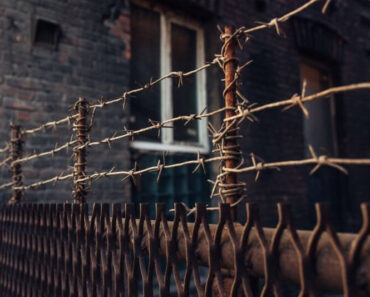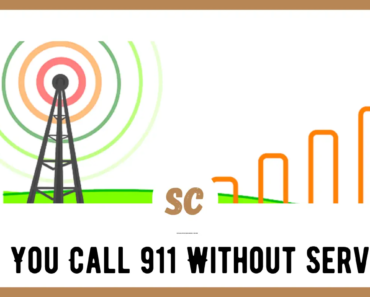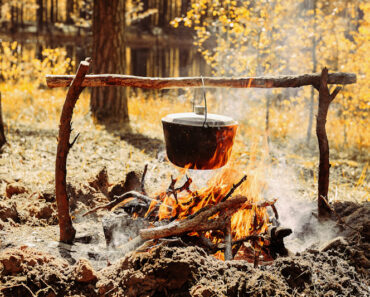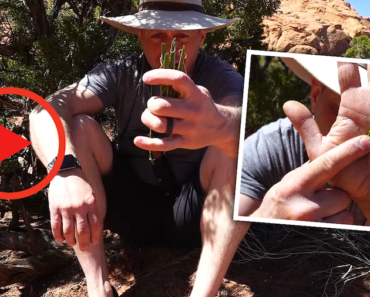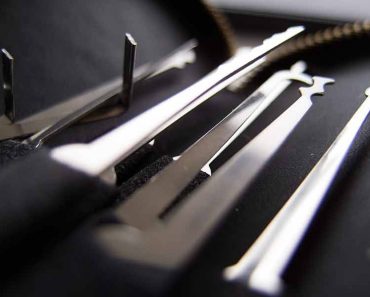Part 2 of 3
Counter-tracking
I will present a few techniques here, but effectiveness at tracking and counter-tracking takes training, study, and practice. Former SERE Instructor J.J. Johnson demonstrates some counter-tracking and E&E material on his YouTube channel Reality Survival. I also recommend reading The Complete Guide to Tracking by Bob Carss (Carss, 1999), and Combat Tracking Guide by John D. Hurth. (Hurth, 2012) The author learned about many of the techniques discussed in this article from these sources.
Post-TEOTWAWKI, the primary object of counter-tracking for the survivor should be to not have his trail and presence discovered by potential enemies who may pursue him. If pursued, the survivor must gain time a ground, lose the tracking party, render it ineffective, or kill it.
Reducing Spoor
Leaving no trace is impossible, but it is possible to leave less trace by walking over rocky ground, moving just before or during precipitation and wind, and avoiding track traps. The first step is to think like a tracker. One of a tracker’s more effective tools is the track trap.
Track traps are ground that will hold a detailed track, like moist clay or fresh snow. To a good tracker, this is better than leaving a time and date stamped photo. He can learn a great deal about the quarry from it and, unlike photos, tracks can be followed.
Cat’s paws are soft-soled footwear or boot soles that reduce spoor, or at least spoor detail. They can be made of felt padding, faux fur or even shag carpet. In a pinch you can wear one or more pairs of socks over your boots. They help break up or obliterate the tread pattern track left by uncovered boot soles. They can also spread your weight over a greater area leaving a shallower track.
Another tactic is to carry a small scrap of shag carpet and a narrow runner of it rolled up. This is most effective when you must cross a track trap like the shoulder of a road. Border patrol will drag objects along behind their trucks down the dirt desert roads to create miles of track traps that make it easier to pick up trails. Step onto the small piece of carpet to change direction and then carefully unroll the longer one as you move.
Litter discipline should also be observed, along with noise, light, and scent discipline. Don’t leave trash, leftover food, feces toilet paper, or animal kills behind. Everything must be masterfully concealed or hauled out with you.
Stone hopping (moving from rock to rock) can be effective if the rocks are large, won’t move under your weight and you won’t disturb their surface as you pass.
J-Hook into Camp and to See if You Are Being Followed
Instead of walking straight into camp, walk past your camp and then circle back to the camp site. This way, if a tracking party follows your trail, they will walk past your camp with their eyes directed away from your camp, giving your sentries the opportunity to slip away or ambush them.
If you are alone, or they the situation warrants it, perimeter alarms or booby traps can also be setup before the hook turns.
The J-hook can also be used to see if you are being followed, or to set an ambush.
Cutting the Corner
Cutting-the-Corner can be used when a trail or road strikes a known intersection and is easiest if the trail that is intersected is hard or rocky. The survivor simply leaves that trail at 90-degrees as when cutting a corner. People and animals do this all the time to save time. The survivor leaves visible spoor traveling down trail, but then backtracks in his own steps to the point where he cut the corner and conceals his trail (by rock hopping, using cat’s paws, carpet or obliterating his trail) continues past the intersection and then heads off trail in another direction.
Walking backwards must be done precisely and slowly so the survivor does not leave a double print, shorten his stride, widen his stance, leave a deeper print at the ball od the foot, or kick up dirt to the rear of the track, which happens when walking backwards at a normal gate. The object is to make the pursuing party think he turned onto a hard trail and waste time continuing down the trail until they hit soft ground (if there is any) and checking the sides of the trail for spoor indicating the quarry left the trail.
Figure 8’s and Boxes
Walking in a series of interconnected figure 8’s or boxes over and over can confuse the tracking party and even dogs. The tracking party then has a large area with a lot of tracks and laying down a lot of scent in boxes or circles, which can make it hard to find the exit point, especially if it done in an area with many good exit points and fake exits.
Scent Dogs
Dogs follow two kinds of scent, ground scent and air scent. The ground scent is comprised of crushed and exposed layers of soil, plants, bacteria, insects and so on caused by boots tearing up the ground and mixing everything up that was not mixed before generating all sorts of smells.
Air scent is tiny particles of human scent carried on the air, such as, body odor, dead skin cells, bacteria, hair, pheromones, bad breath, what you ate coming back up, cigarette smoke, fabric softener, deodorant, cologne, perfume, hair gel, chap stick, and so on. We constantly shed particles that are carried on the air and wind.
Ideal conditions for dogs to track by scent are moist, light wind, and at night. You want it to be bone dry or heavy precipitation, daytime, and fierce wind. If there is wind, traveling with it disperses less than traveling into it.
Dogs are harder to lose than people. Instructors advise students to defeat the dog handler rather than the dog because it is easier to confuse him or make him give up and he controls the dog, so if you trick him, he will take his dog with him.
That said, dogs have a harder time in urban areas with lots of traffic, and vertical or rough terrain with lots of scrambling and climbing. Dogs often lose quarry that hops on a bicycle or on an animal such as a horse.
Tests suggest that spraying pepper spray does more harm than good because it gets on the quarry when deployed and makes them easier to track. I suppose if a deliver method could be developed that sealed OC dust in scent-proof barrier and put that in an OC munition, that could be used as a boobytrap and left for dog and handler. Good luck testing that in the US and publishing the results though.
Really tough terrain and easy ambush sites can also make a handler go around them and try to pick up the trail elsewhere.
Noise, Light and Scent Discipline
Good hunters, especially bow hunters, understand good noise, light, and scent discipline. The human voice is unmistakable and can be heard at a great distance on a cool still desert night or across a still lake. Like military units, hunting partners learn to use hand signs instead of speaking. They eliminate unnecessary and exaggerated movements, learning to move slowly, pointing with their chin instead of their index finger.
Equipment and clothing should be selected that does not rustle or make noise if it catches on a branch. You look at buckles, zippers, and Velcro differently because they can give you away a mile away under the right conditions. I have come to favor quiet closures. Canteens slosh when partially full. Bladders don’t.


Light discipline means checking your map with a weak LED on the ground, in a wash, surrounded by brush, under a jacket or poncho liner instead of using a Surefire, on top of a hill, in the open. When lighting is necessary for navigation, use a weak, red, or green LED with a shroud so the light is only visible in one direction.
To maintain scent discipline, hunters know to wash clothing by hand in scent-free detergent without UV brighteners. We use unscented shampoo, soap, deodorant, and toothpaste, and forego everything else. Hunting clothing and gear shouldn’t be stored in your home full of smells and should be air out after washing and before use.
Boobytraps
The presence of boobytraps slows the tracking party, even obvious or less lethal ones, because they may be diversions for more effective boobytraps. Boobytraps can be command detonated or “dumb” and can be less lethal or lethal. The danger of dumb boobytraps is that anybody who stumbles into them could set them off including a family member, a child, a firefighter, or a pet.
I won’t go into specific boobytraps here, volumes have been written about them. I will comment that they are dangerous, possibly illegal, not for children, and to be used at your own risk. For counter-tracking purposes, they should also be lightweight, compact, and quick to set up.
Continued in Part 3
References
Carss, B. (1999). The Complete Guide to Tracking. London: Constable & Robinson Ltd.
Hurth, J. D. (2012). Combat Tracking Guide. Mechanicsburg, PA: Stackpole Books.
Mears, R. (2002). Medical Kit. In R. Mears, Essential Bushcraft (pp. 16-18). London: Hodder & Stoughton.



